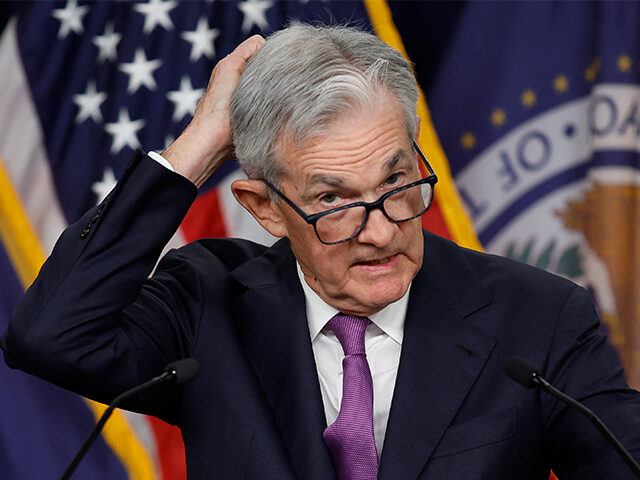“Behind the Curve”: A Monetary Saga
We were reminded recently of the story of a well-known monetary economist who was always showing up late to meetings. When a colleague pointed out his habitual tardiness, the economist replied that he was never actually late.
He was always leaving on time, but the time of his arrival was lagged and variable.
The Federal Reserve justifiably received a lot of criticism for its tardy response to the surge of inflation and its ill-advised asseveration that this would be “transitory.” In the fashionable phrase repeatedly used to describe the situation, the Fed was “behind the curve.”
Now it is once again in vogue to complain that the Fed is reacting to economic changes too slowly. Only this time around, the critics are arguing that the Fed is being too hesitant to lower interest rates. If the Fed continues to hold rates steady through the spring and into the summer, you can expect these complaints to become louder and more frequent.
“Restrictive” or Just Misunderstood?
Federal Reserve Chairman Jerome Powell has often described the policy of the central bank as “restrictive.” The proponents of an early rate cut argue that monetary policy is becoming more restrictive as inflation declines because real interest rates are rising even though nominal rates are holding still.
The logic is easy enough to follow. If the federal funds rate is 5.40 percent and inflation is 3.4 percent, the real rate is two percent. (There are other ways of calculating the real rate—some analysts prefer using a measure of expected inflation—but the differences are immaterial for this point.) If inflation drops down to 2.4 percent while the fed funds rate is unchanged, the real rate rises to three percent.
The rate-cut enthusiasts argue that if inflation is already coming down, it does not make sense for monetary policy to be tightening in this way. If the Fed thinks inflation is restrictive enough now, it should cut rates to keep pace with declining inflation, the argument goes.
What’s more, they say, the effects of monetary policy only act on the economy with long and variable lags. So, the hikes that the Fed implemented last year may still be working their way through the economy. If the Fed were to wait to cut until the economy noticeably slowed, it would risk once again falling “behind the curve” and possibly sending the economy into a recession.
In a survey published Monday, the National Association for Business Economists found that 21 percent of respondents say Fed policy is too restrictive. While that’s still a minority view, it is the highest since mid-2010.
The Economy’s Defiant March
The trouble with holding this view today is that the economic data does not support the idea that the stance of monetary policy is very restrictive at all. The Federal Reserve estimates that the longer-run potential growth of the economy is a mere 1.8 percent. Never once since the Fed started raising rates has the economy grown at a pace at or below that pace.
As for the idea that the effects are lagged, the evidence points in the opposite direction: the economy has been accelerating as we have traveled forward through the corridors of time from the first rate increase. The economy grew at a 4.9 percent pace in the third quarter of last year, a 3.3 percent pace in the fourth quarter, and GDPNow has it growing at a 3.4 percent pace.
Lawrence Lindsey asks in a recent note to clients of the Lindsay Group, “If Policy Is Restrictive, What Exactly Is Being Restricted?” Lindsey points out that the Federal Reserve’s summary of economic projections (SEP) shows that Fed officials view the longer-run inflation rate at two percent and the longer-run federal funds rate at 2.5 percent. Which is to say, they view the longer-run real rate of interest as just 0.5 percent.
It was not always so. Back in 2014, the Federal Reserve projected that the longer-run fed funds rate would average 4.3 percent, producing a real rate of 2.3 percent. As Lindsey points out, John Taylor’s famous “Taylor Rule” was based on the finding that the long run equilibrium real rate is around two percent.
Between 2014 and 2016, the Fed dropped its projected longer-run interest rate from around four percent to around three percent, cutting the implied real rate in half. The justification for this was that growth appeared to be sluggish, and inflation was consistently undershooting the Fed’s two percent target. In 2019, the Fed’s SEP showed the longer-run estimate falling down to 2.5 percent—where it has remained ever since.
This is a remarkable asymmetry. When inflation was persistently below the Fed’s target, the estimated real rate was pushed down. But even when inflation soared higher and lasted longer than Fed officials expected, the longer-run real rate remained completely unchanged. The Fed kept projecting two percent inflation and a 2.5 percent fed funds rate all through the episode.
The “Woke” Taylor Rule
A lot of the expectations that the Fed will cut many times this year—and the growing perception that monetary policy is too restrictive—appears based on the assumption that this will not change. That is, that the Fed will remain wedded to the idea that the real rate should be around half a percentage point and therefore the Fed funds rate will “normalize” at around 2.5 percent. Lindsey calls this the “woke” version of the Taylor Rule.
Yet, this assumption may prove incorrect. The recent performance of the economy suggests that the real rate compatible with sustainable growth and two percent inflation is higher than a half a percent.
With any luck, the Fed will come to see this soon enough. Sadly, we expect that the realization that real rates need to be higher may arrive no more on time than the lagged and variable economist.

COMMENTS
Please let us know if you're having issues with commenting.